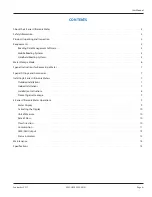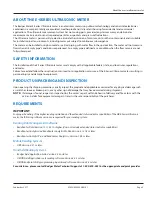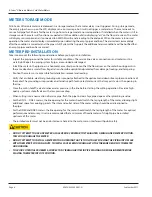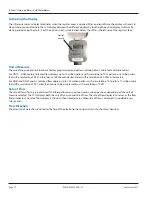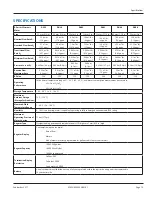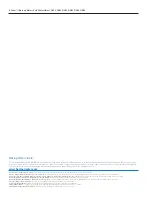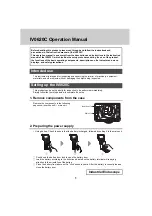
Installation Instructions
To prepare for meter installation, follow these steps:
1 Close the meter's inlet-side valve
2 Open a faucet and wait until water flow stops, to depressurize the system Do not remove the meter until the
flow stops
3 Check valves and make necessary repairs to the curb (shutoff) valve or inlet side valve if necessary
4 Before installing or removing a meter, close the outlet-side valve to relieve pressure Protect the area around the meter
against potential spills or leaks that could occur
5 To replace an existing meter continue with Step 6 To install a new meter skip to Step 8
6 Loosen the meter couplings or flange bolts and remove the meter and the old gaskets in the coupling nuts You may
choose to replace the old gaskets with the provided 9/64 in thick rubber gaskets
7 Clean the coupling nuts or flange bolts, removing any pipe dope or dirt from the threads or flange bolts
8 Check the existing position for proper alignment and spacing Correct any misalignment or spacing issues
9 Place the connection gaskets inside the connection coupling nuts
10 Install the meter in the pipeline in a horizontal or vertical position so that the flow arrow on the meter housing
points in the same direction as water flow Registration should be upright
11. For DN15…DN32
a Start the coupling nuts at the threaded meter ends Verify that the nuts are properly aligned to avoid cross-threading
or damage to the meter ends This is especially important for the engineered polymer meter
b An effective method for starting a coupling nut is:
i Position the nut squarely against the meter's spud end
ii Turn the nut counterclockwise (in reverse) while holding the nut against the meter spud end When the first
threads on both the nut and the spud end coincide, you will hear a slight click and feel the nut move into the
starting position
iii Tighten the nut by hand until it is "hand-tight"
iv With an open-end wrench, apply a partial turn Do not over tighten For plastic swivel connections, a one-quarter
turn beyond hand-tight is usually sufficient
11. For DN40 and DN50
a With meter and gaskets in place, tighten the flange connection bolts Verify the nuts are properly aligned to avoid
damage to the flanged ends
12 After the meter is installed, open the inlet shutoff valve until the meter is full of water and ensure that there are no leaks
(The more flow you allow through the meter, appropriate for the meter size, the better )
13 Open the outlet valve until air is out of the meter and service line
14 Open a valve downstream of the meter and verify that no foreign debris in the water obstructs the operations of
the system
15 Make sure the meter is installed with the
flow arrow on the meter pointing in the direction of flow
Check the read on the
meter to make sure it is registering a positive number If it is not, make sure the meter is installed in the correct direction
a The meter is sent in Storage mode so that customers do not experience alarms during shipment or installation In
general, a meter may take up to 2 minutes to begin measurement once the meter senses a full pipe
b The meter itself does not require a quantity of flow to begin measurement, the meter just requires that the pipe is
cleared of air and filled with water If the customer is attempting to purge the meter at low flow rates, it would likely be
more difficult and take longer
16 When the meter starts recording positive flow, note the meter read for your records
E-Series® Ultrasonic Meters, Cold Water Meters
Page 8
September 2017
ESM-UM-00255-EN-01



